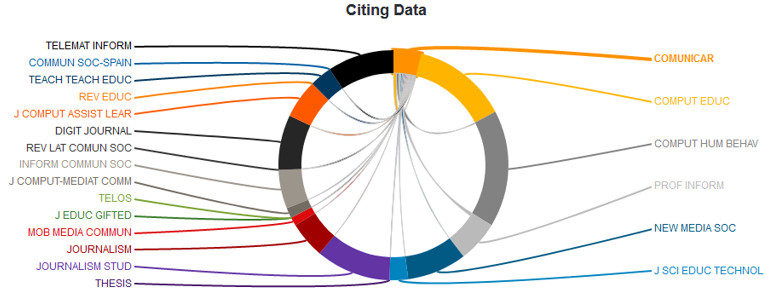Author: Rafael Repiso – Translation: Erika-Lucia Gonzalez-Carrion
It is common for a subject to be present in several journals and therefore for there to be affinity between them. The affinities between journals are diluted when the common subject matter is very broad and, on the other hand, when the field is highly hyper-specialized it increases, while the chances of there being other similar journals are reduced. In other words, any journal in Education, however specialized it may be, is similar to a generic journal in the field, but two journals that focus on the publication of works on a specific topic, Education and Communication, for example, will have a high degree of similarity between them, inverse to the relative size of the field.
In addition, when two or more journals share a topic, they also share other elements, such as authors, reviewers and even members of the editorial board. That is why a researcher in a particular area should know in which journals he/she can find papers that are of interest to him/her and submit manuscripts at the same time. In case of rejection, it is normal to resubmit the paper to a journal related to the first one.
As mentioned above, the usual affinity between journals is thematic, which means that journals are sensitive to publishing the same papers. This affinity between journals makes them compete in a short range of aspects, such as attracting the best papers and researchers (authors and reviewers) or positioning in databases, but they converge in the main objective, which is the growth of knowledge in an area and attention to a specific community. Therefore, collaboration is usually the main trend among journals in the area, especially because a large number of members are present in both, and the scientific impact of one depends very closely on the recognition it has in related journals.
A complex way to identify the affinity between journals, but easy thanks to products such as the Journal Citation Reports of Web of Science, is the analysis of the exchange of citations between journals. Journals in a thematic area cite each other, since the works are built on published knowledge and being a common area, the usual tendency is to cite the works published by related journals in a regular exchange of citations. In the case of Comunicar we see its similarity with journals such as Computer Education, Computer Human Beahaviour or the Information Professional. Geographical elements are also an element of affinity. El Profesional de la Información and Comunicar are the only two Spanish communication journals indexed in JCR, so, although they do not coincide in the specifics of their topics, they do share a good part of the community.

The researcher who knows the journals in his area and the affinities between them has a structural vision of the area and this knowledge offers imponderable benefits, both as a reader and as an author of scientific papers.
